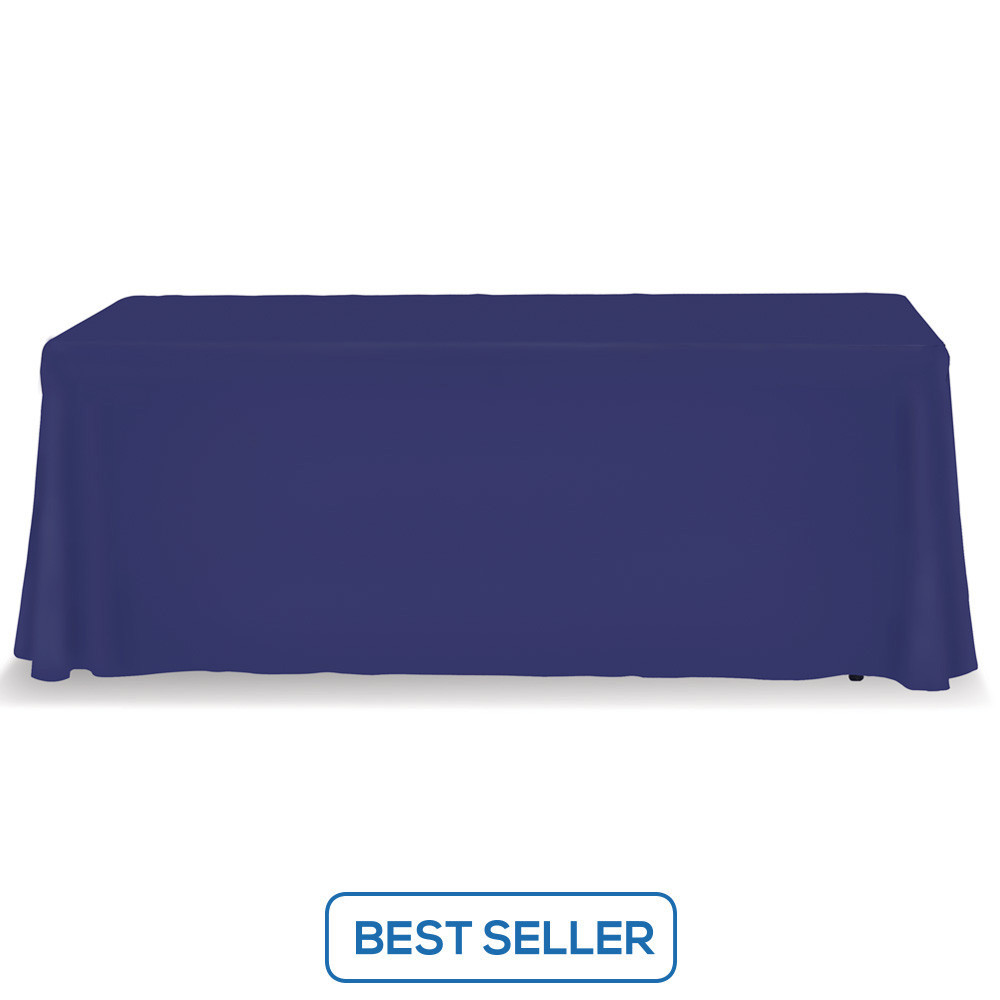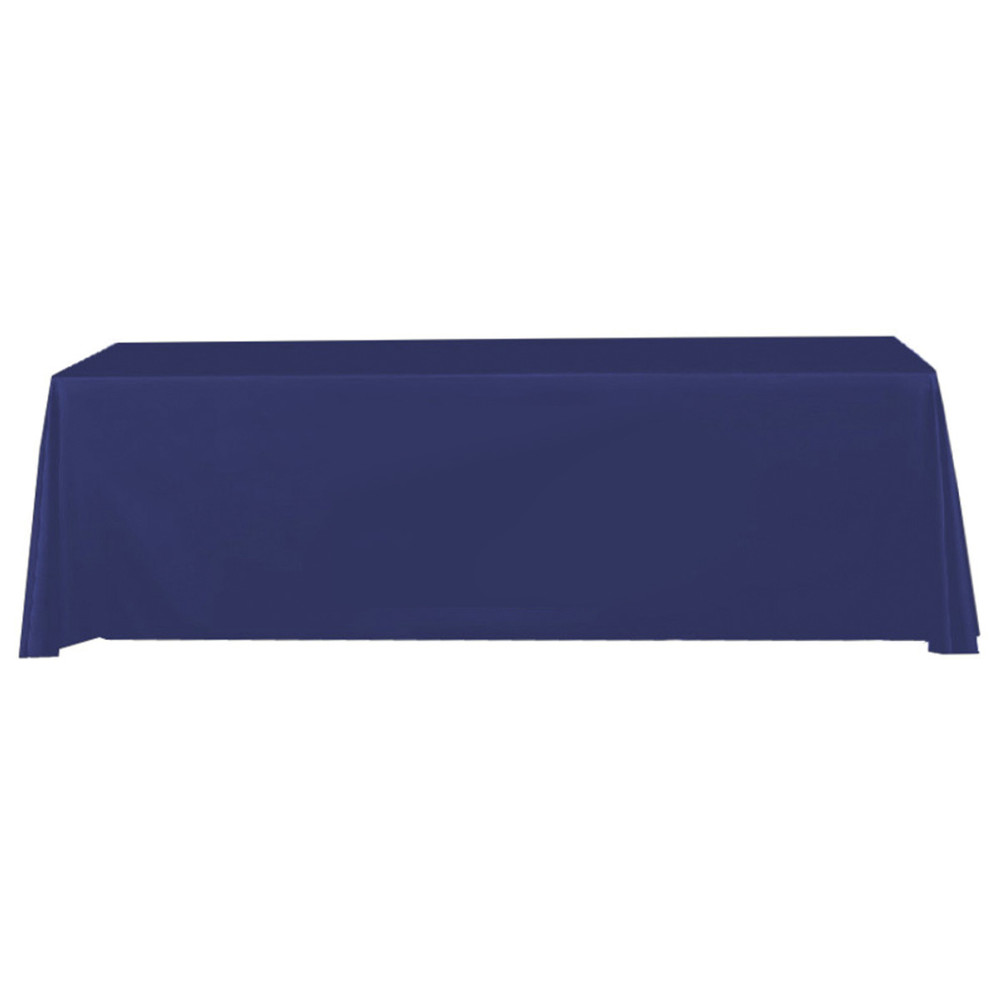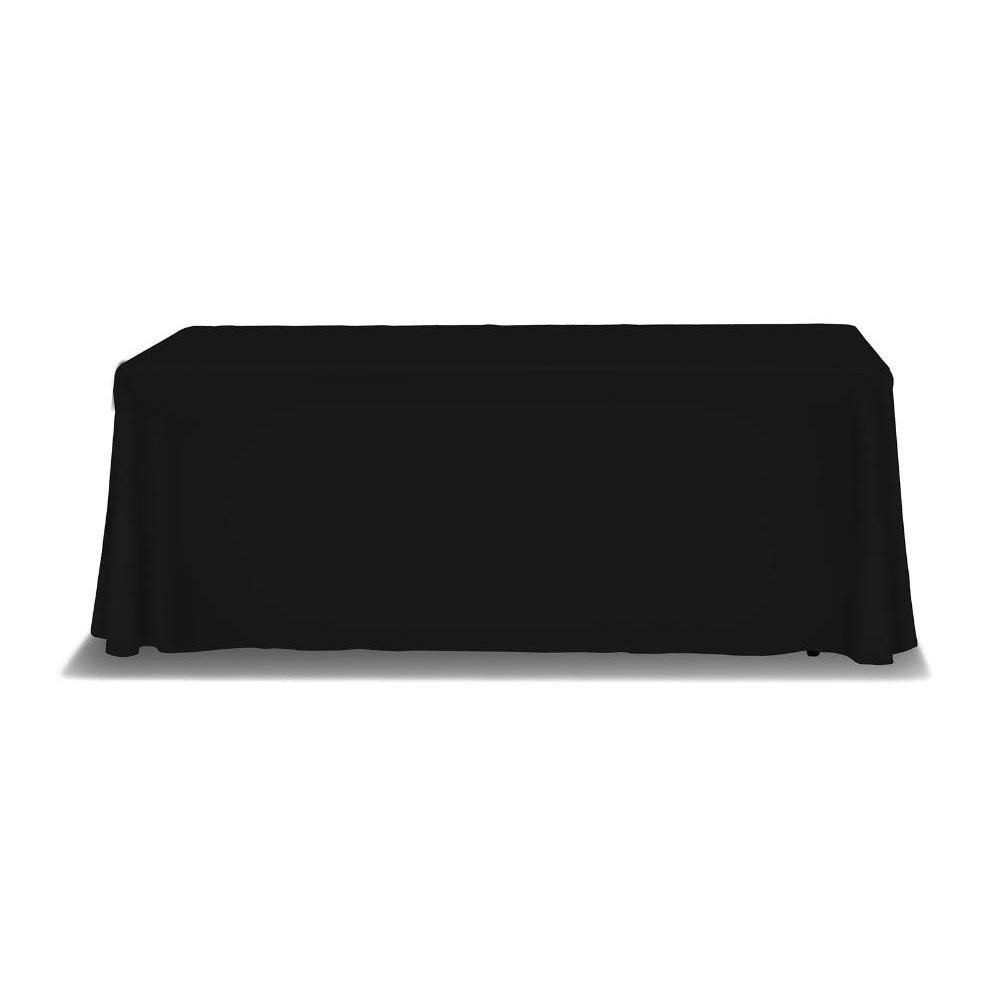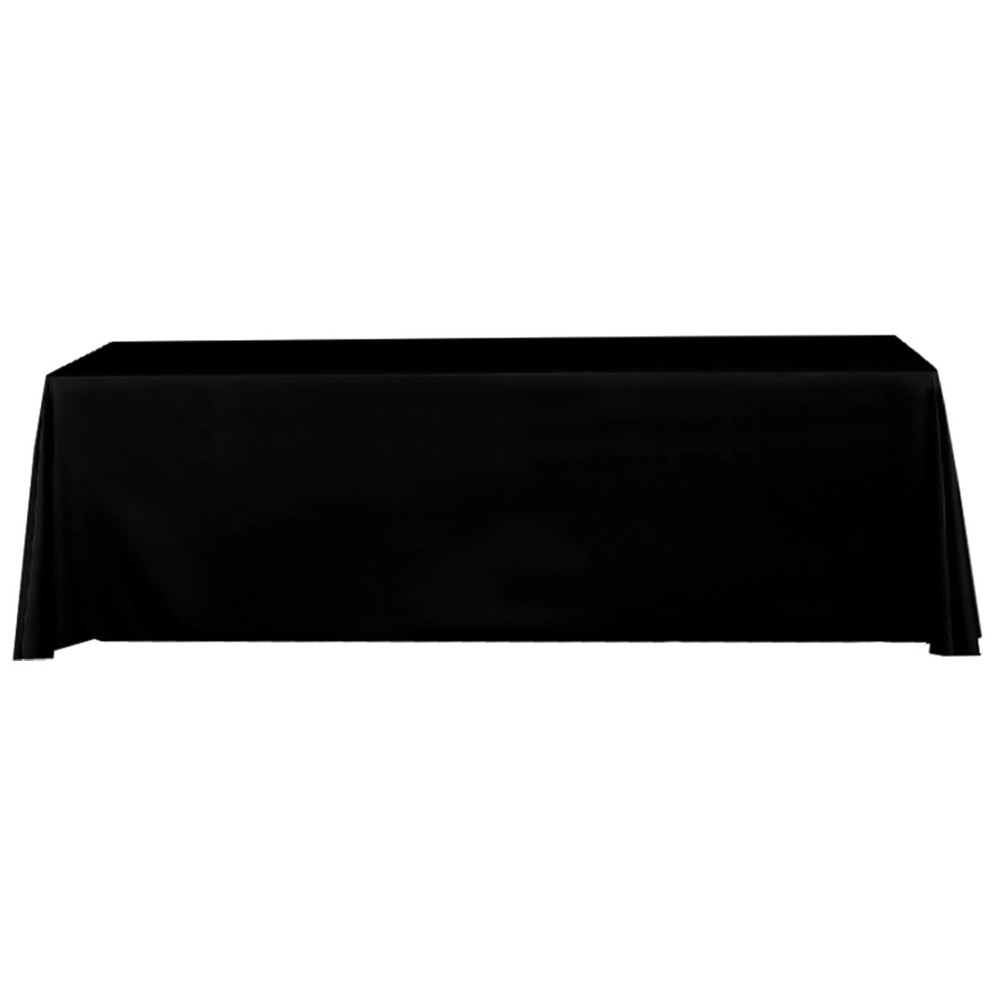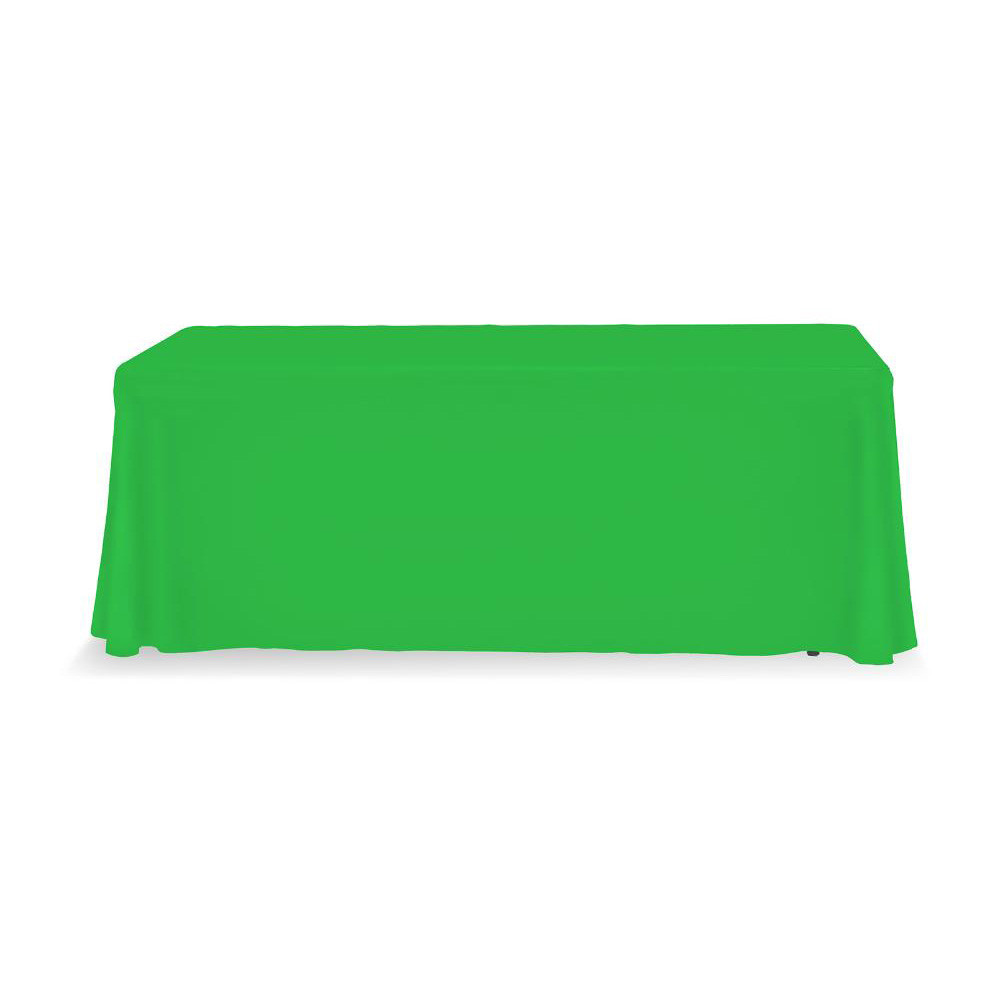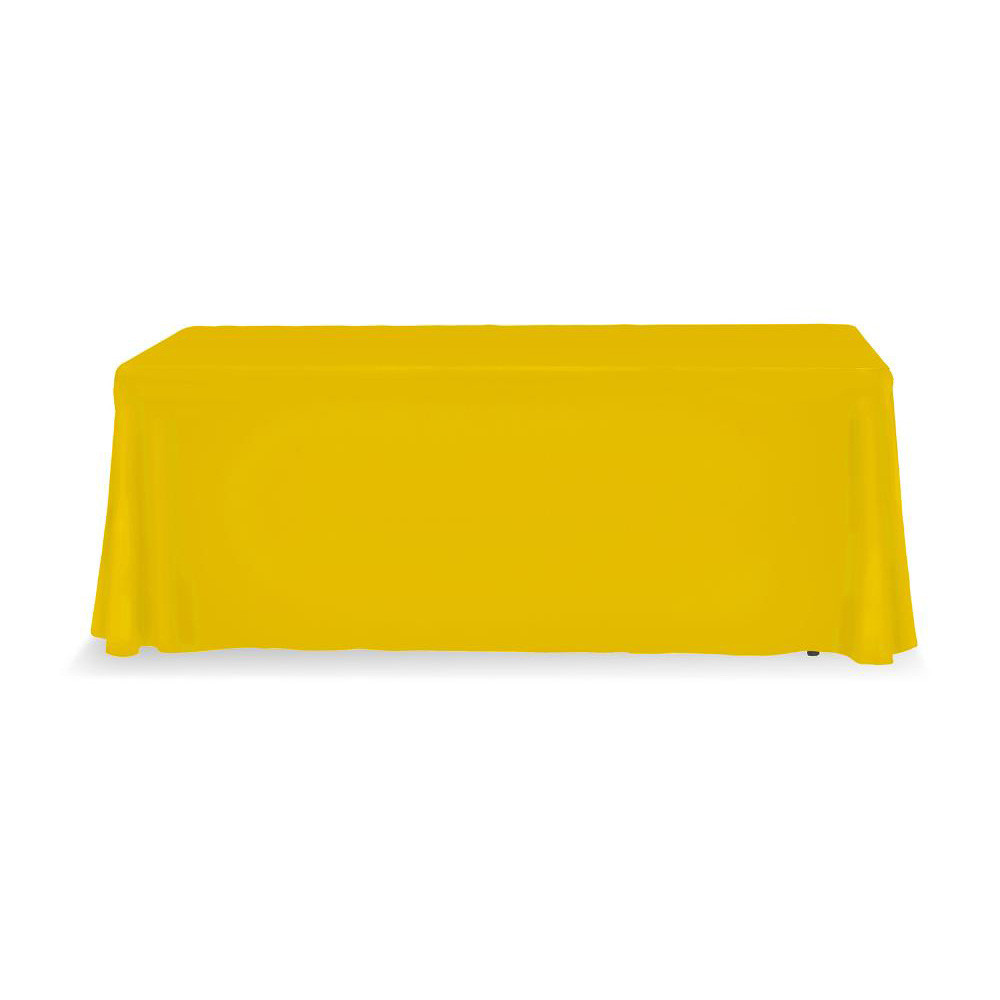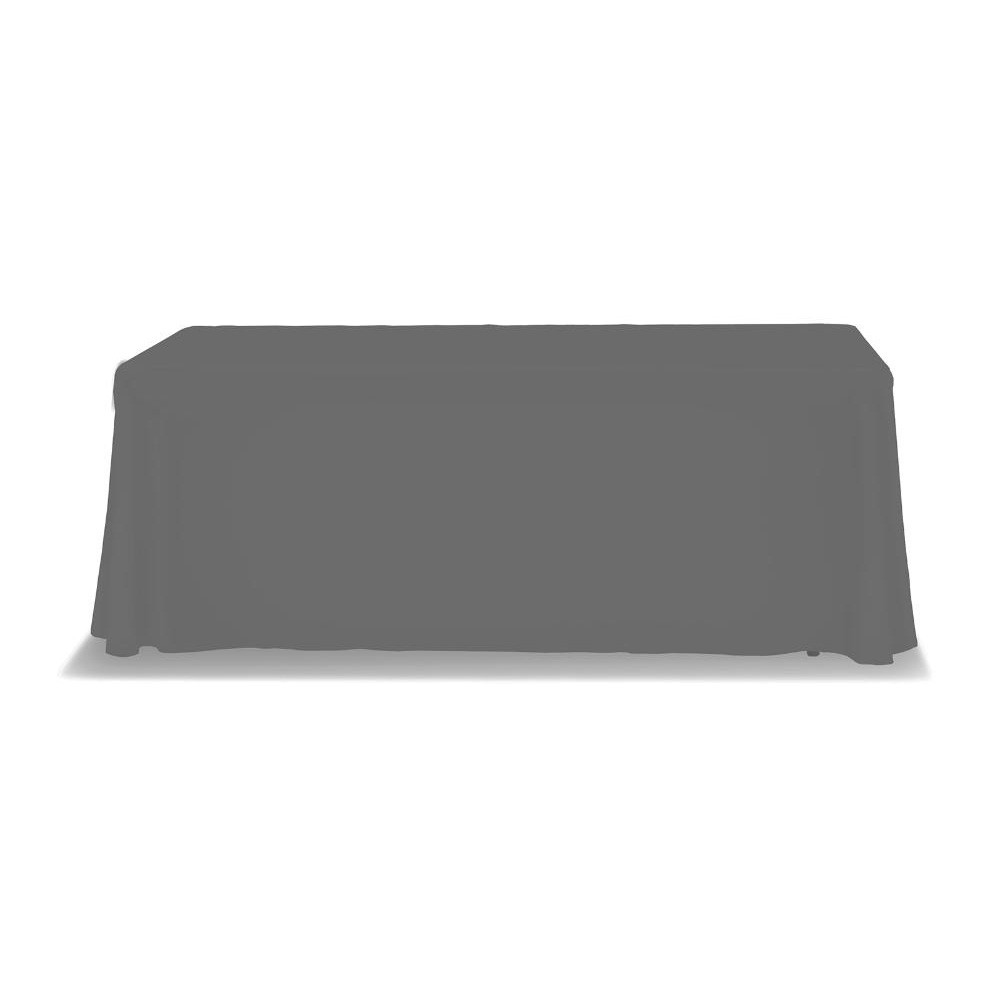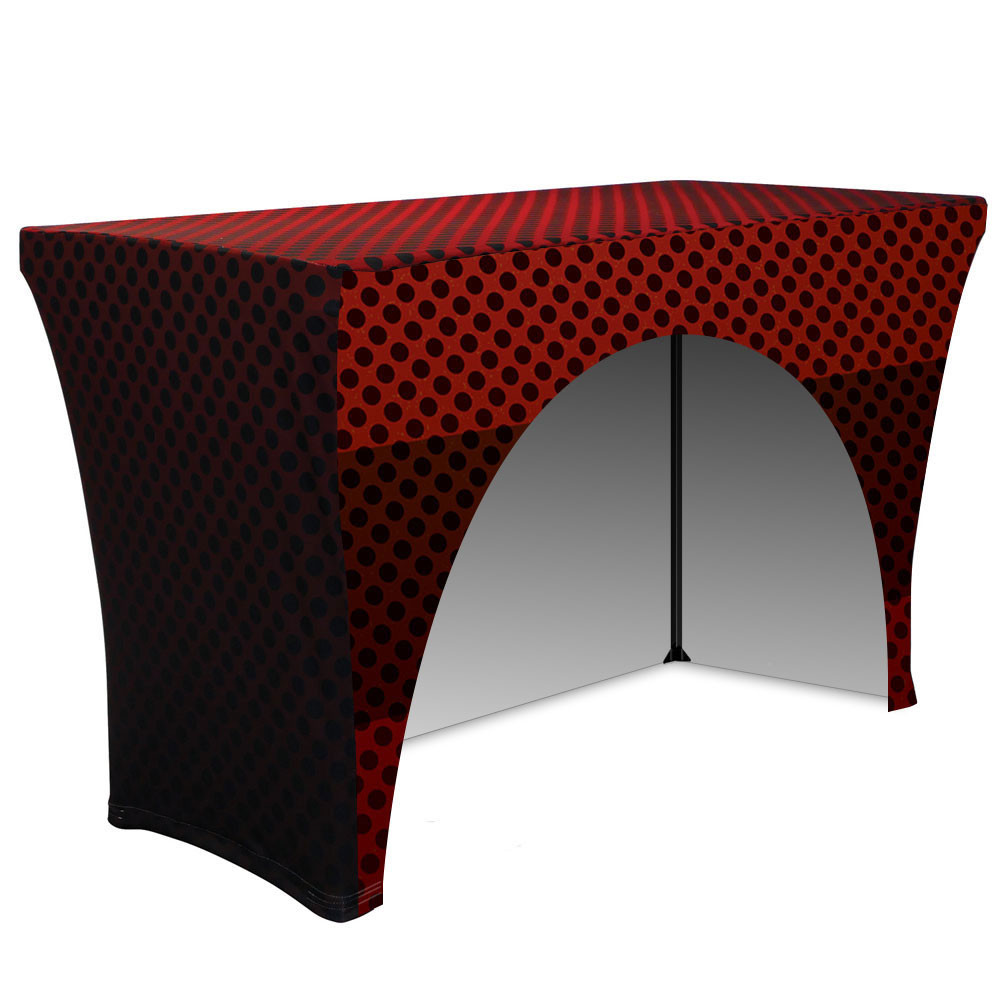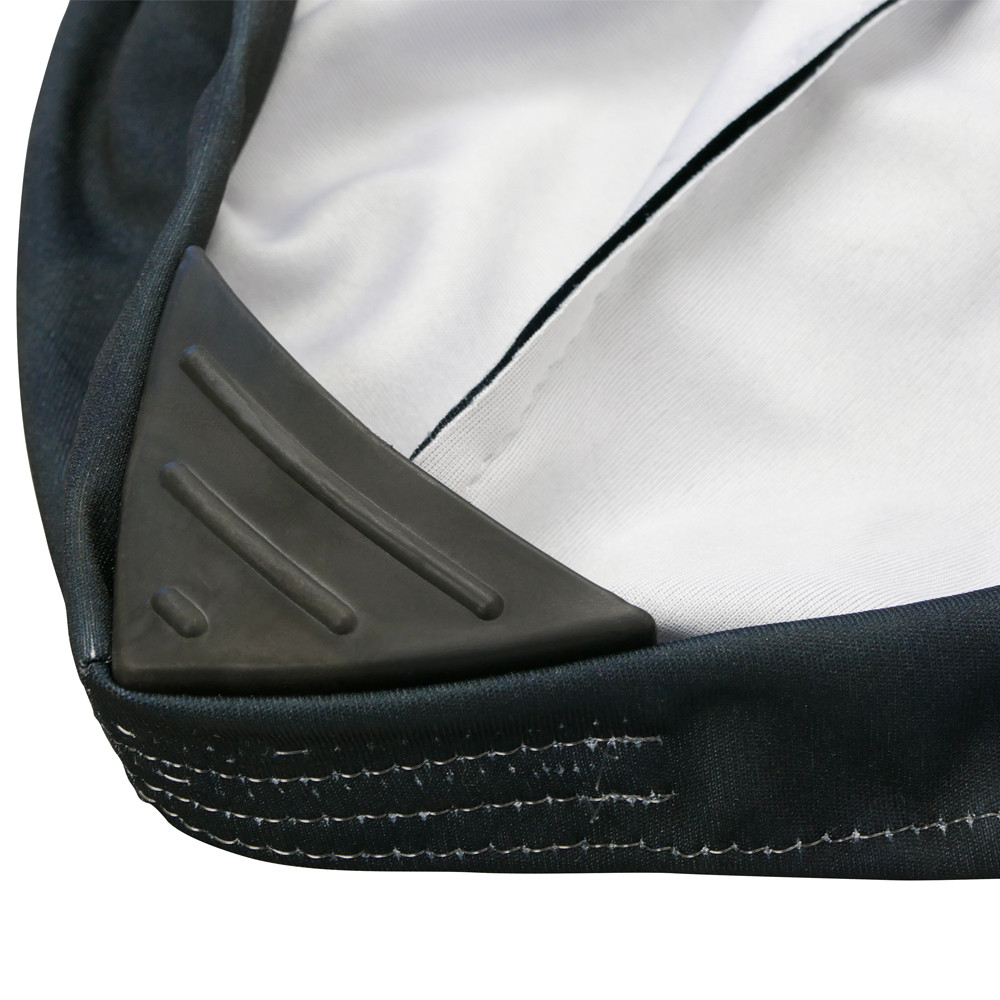Engaging the Senses: Unleashing the Power of Multi-sensory Experiences in Trade Show Exhibits
Trade shows have long been a staple in the business world, providing companies with a platform to showcase their products and services to a wide audience. However, in recent years, trade show exhibits have evolved beyond the traditional static displays and brochures. Companies are now leveraging the power of multi-sensory experiences to captivate visitors and leave a lasting impression. From immersive virtual reality simulations to interactive touchscreens and even aromatic scents, trade show exhibits are becoming a feast for the senses.
In this article, we will explore the rise of multi-sensory experiences in trade show exhibits and the impact they have on both exhibitors and attendees. We will delve into the various elements that make up these experiences, such as visual displays, audio enhancements, tactile interactions, and even olfactory stimulation. Additionally, we will examine the benefits of incorporating multi-sensory elements into trade show exhibits, including increased engagement, brand memorability, and improved customer connections. Whether you are a trade show exhibitor looking to stand out from the crowd or an attendee seeking an unforgettable experience, this article will provide valuable insights into the world of multi-sensory trade show exhibits.
Key Takeaway 1: Multi-sensory experiences in trade show exhibits enhance engagement and leave a lasting impression.
Trade show exhibits that incorporate multi-sensory elements such as sound, lighting, scent, and touch provide a more immersive experience for attendees. These experiences not only capture their attention but also create a lasting impression, making the exhibit more memorable and increasing brand recall. By engaging multiple senses, exhibitors can create a unique and captivating atmosphere that stands out from the competition.
Key Takeaway 2: Multi-sensory experiences can effectively communicate brand messaging and product benefits.
Through the use of multi-sensory experiences, exhibitors can effectively communicate their brand messaging and highlight the benefits of their products or services. For example, incorporating interactive displays, virtual reality, or augmented reality can allow attendees to experience the benefits of a product firsthand, leading to a better understanding and appreciation of its value. Additionally, using sensory cues such as specific scents or sounds can evoke emotions and associations that align with the brand’s identity and message.
Key Takeaway 3: Multi-sensory experiences drive increased foot traffic and audience engagement.
Trade show exhibits that offer multi-sensory experiences tend to attract more foot traffic and encourage audience engagement. The novelty and excitement of these experiences draw attendees in, prompting them to explore the exhibit and spend more time interacting with the brand. This increased engagement can lead to more meaningful conversations, higher lead generation, and ultimately, a greater return on investment for exhibitors.
Key Takeaway 4: Multi-sensory experiences should align with the target audience and brand identity.
While multi-sensory experiences can be powerful tools, it is crucial to ensure they align with the target audience and brand identity. Understanding the preferences and expectations of the target audience is essential in designing experiences that resonate with them. Additionally, the sensory elements chosen should reflect the brand’s values, personality, and overall message to create a cohesive and authentic experience.
Key Takeaway 5: Proper planning and execution are key to successful multi-sensory trade show exhibits.
Creating a successful multi-sensory trade show exhibit requires careful planning and execution. Exhibitors should consider factors such as space limitations, budget, and technical requirements when incorporating sensory elements. It is important to work with experienced professionals who can help design and implement these experiences effectively. Additionally, exhibitors should gather feedback and analyze the impact of the multi-sensory elements to continually improve and refine their approach in future trade show exhibits.
1. Integration of Virtual Reality (VR) and Augmented Reality (AR) in Trade Show Exhibits
One emerging trend in trade show exhibits is the integration of virtual reality (VR) and augmented reality (AR) technologies to create immersive multi-sensory experiences for attendees. VR and AR offer a unique opportunity to transport visitors to different environments, showcase products in interactive ways, and engage multiple senses simultaneously.
Trade show exhibitors are increasingly using VR and AR to create virtual tours of their products or services. For example, a car manufacturer can allow attendees to virtually sit in their latest models, explore the interior, and even take a virtual test drive. This not only enhances the visual experience but also engages the sense of touch and movement, making the experience more memorable and impactful.
AR, on the other hand, overlays digital information onto the real world, allowing exhibitors to provide additional information or interactive elements. For instance, a furniture company can use AR to show how their products would look in different settings, allowing attendees to visualize the items in their own homes. This integration of AR not only engages the visual sense but also helps attendees make more informed purchasing decisions.
The future implications of this trend are significant. As VR and AR technologies continue to advance, trade show exhibitors will have even more tools at their disposal to create captivating multi-sensory experiences. This can lead to increased attendee engagement, longer dwell times at exhibits, and ultimately, a higher likelihood of converting leads into customers.
2. Interactive Touchscreens and Gesture Control
Another emerging trend in trade show exhibits is the use of interactive touchscreens and gesture control to create engaging multi-sensory experiences. These technologies allow attendees to interact with digital content in a more tactile and intuitive way, enhancing their overall experience.
Interactive touchscreens are being used to showcase product catalogs, provide detailed information, and even allow attendees to customize and personalize products. For example, a clothing brand can use touchscreens to showcase their latest collection, allowing attendees to browse through different styles, colors, and sizes. This not only engages the visual sense but also the sense of touch as attendees navigate through the touchscreen interface.
Gesture control technology takes interactivity to a whole new level by allowing attendees to control digital content through hand movements or gestures. This can be particularly effective in gaming or simulation experiences, where attendees can physically interact with virtual objects or environments. For instance, a software company can use gesture control to allow attendees to manipulate 3D models or navigate through a virtual environment, creating a truly immersive and multi-sensory experience.
The future implications of this trend are exciting. As touchscreens become more advanced and gesture control technology continues to evolve, trade show exhibitors will be able to create even more interactive and intuitive experiences for attendees. This can lead to increased attendee engagement, better information retention, and a more memorable overall trade show experience.
3. Integration of Scent and Sound Elements
An emerging trend in trade show exhibits is the integration of scent and sound elements to create a multi-sensory experience that engages attendees on a deeper level. Scent and sound have a powerful impact on emotions and can help create a more immersive and memorable brand experience.
Trade show exhibitors are using scent elements strategically to enhance the ambiance of their exhibits and create a sensory connection with their brand. For example, a coffee company can infuse their exhibit with the aroma of freshly brewed coffee, instantly transporting attendees to a café-like environment and evoking positive emotions associated with the smell of coffee. Similarly, a spa brand can use scents associated with relaxation and tranquility to create a calming atmosphere in their exhibit.
Sound elements, such as background music or carefully curated audio experiences, are also being used to enhance the overall sensory experience. For example, a technology company can create an immersive audio experience that showcases the capabilities of their products. This can be particularly effective in creating a sense of anticipation and excitement among attendees.
The future implications of this trend are promising. As technology continues to advance, trade show exhibitors will have even more sophisticated tools to integrate scent and sound elements seamlessly into their exhibits. This can create a truly immersive and multi-sensory experience that not only engages attendees but also helps strengthen the emotional connection between the brand and the target audience.
The Ethical Implications of Manipulating Senses
One of the controversial aspects of multi-sensory experiences in trade show exhibits is the ethical implications of manipulating our senses for marketing purposes. These exhibits often employ various techniques to create immersive environments that engage all the senses, including sight, sound, smell, taste, and touch. While this can be an effective way to capture the attention of attendees and leave a lasting impression, it raises questions about the boundaries of ethical marketing practices.
On one hand, proponents argue that trade show exhibits are meant to be experiential, and by stimulating multiple senses, companies can create a more memorable and engaging experience for attendees. They believe that as long as the sensory manipulation is transparent and does not deceive or harm consumers, it is a legitimate marketing strategy.
However, critics argue that manipulating our senses in a trade show setting can be manipulative and deceptive. They argue that by creating an artificial environment that appeals to our senses, companies are effectively manipulating our emotions and perceptions to influence our purchasing decisions. This raises concerns about informed consent and whether attendees are fully aware of the extent to which their senses are being manipulated.
Ultimately, the ethical implications of multi-sensory experiences in trade show exhibits depend on the transparency and intentions of the companies involved. It is crucial for companies to be upfront about the sensory manipulation techniques they employ and ensure that attendees are not being deceived or coerced into making purchasing decisions they would not have made otherwise.
The Environmental Impact of Multi-Sensory Exhibits
Another controversial aspect of multi-sensory experiences in trade show exhibits is the potential environmental impact. These exhibits often rely on various technologies, such as lighting, sound systems, scent machines, and interactive displays, which consume energy and resources.
Proponents argue that the immersive nature of multi-sensory exhibits is essential for creating a memorable experience and attracting attendees. They believe that the benefits of engaging attendees and potentially increasing sales outweigh the environmental costs. They argue that companies can mitigate the environmental impact by using energy-efficient technologies, recycling materials, and offsetting their carbon footprint through sustainable practices.
However, critics argue that the environmental impact of these exhibits can be significant, especially considering the number of trade shows that take place globally each year. They argue that the resources consumed and the waste generated by these exhibits contribute to climate change and pollution. They believe that companies should prioritize sustainability and explore alternative ways to engage attendees without relying heavily on energy-consuming technologies.
It is important for companies to consider the environmental impact of their multi-sensory exhibits and take steps to minimize their carbon footprint. This can include using energy-efficient technologies, sourcing sustainable materials, and exploring innovative ways to create immersive experiences that are less resource-intensive.
The Potential for Overstimulation and Sensory Overload
A controversial aspect of multi-sensory experiences in trade show exhibits is the potential for overstimulation and sensory overload. These exhibits often bombard attendees with a combination of visual, auditory, olfactory, and tactile stimuli, which can be overwhelming for some individuals.
Proponents argue that the purpose of these exhibits is to create a memorable and engaging experience, and a certain level of sensory stimulation is necessary to achieve that goal. They believe that attendees have the choice to engage with the exhibits at their own pace and can step away if they feel overwhelmed.
However, critics argue that the intense sensory stimulation in these exhibits can be distressing for individuals with sensory sensitivities, such as those with autism or sensory processing disorders. They argue that trade show organizers and exhibitors should consider the needs of all attendees and provide quiet spaces or alternative experiences for those who may be overwhelmed by the multi-sensory exhibits.
It is crucial for trade show organizers and exhibitors to strike a balance between creating immersive experiences and ensuring the comfort and well-being of all attendees. This can be achieved by providing clear information about the level of sensory stimulation in the exhibits and offering alternative experiences or quiet spaces for individuals who may need a break from the sensory overload.
The Power of Multi-sensory Experiences
Trade show exhibits have evolved significantly over the years, and one of the most impactful changes has been the incorporation of multi-sensory experiences. These experiences engage multiple senses, such as sight, sound, touch, smell, and even taste, to create a memorable and immersive environment for attendees. By stimulating various senses simultaneously, exhibitors can capture attention, enhance brand messaging, and leave a lasting impression on visitors.
Creating an Engaging Visual Display
Visual elements play a crucial role in trade show exhibits, as they are often the first thing that catches attendees’ attention. Incorporating eye-catching graphics, vibrant colors, and interesting visual displays can help exhibitors stand out from the crowd. Large-scale video walls, interactive touchscreens, or even holographic projections can be used to create visually stunning experiences that captivate visitors and draw them into the exhibit space.
Utilizing Sound to Enhance the Experience
Sound can have a powerful impact on our emotions and can be used strategically in trade show exhibits to create a more immersive environment. Exhibitors can incorporate background music, sound effects, or even live performances to set the mood and enhance the overall experience. For example, a technology company showcasing their latest gadgets might use futuristic sound effects to create a sense of excitement and anticipation among attendees.
Engaging the Sense of Touch
Incorporating tactile elements in trade show exhibits can provide a hands-on experience for attendees and make the booth more interactive. This can be achieved through the use of touchscreens, product demonstrations, or even interactive games. For instance, a car manufacturer might allow visitors to sit in one of their latest models, encouraging them to touch the luxurious interiors and experience the comfort firsthand.
Appealing to the Sense of Smell
The sense of smell is closely linked to memory and emotions, making it a powerful tool for creating lasting impressions. By incorporating pleasant scents into their exhibits, exhibitors can create a more immersive and memorable experience. For example, a food company promoting a new line of coffee might infuse the air with the aroma of freshly brewed coffee, instantly transporting visitors to a cozy café setting.
Tantalizing Taste Experiences
While not as commonly utilized as other senses, taste can also be incorporated into trade show exhibits to create a truly multi-sensory experience. Food and beverage companies often offer samples of their products, allowing visitors to taste the flavors and textures firsthand. This not only engages the sense of taste but also creates a positive association with the brand, increasing the likelihood of future purchases.
Case Study: XYZ Corporation’s Immersive Exhibit
XYZ Corporation, a leading technology company, recently showcased their latest product line at a major trade show. Their exhibit was designed to provide a multi-sensory experience for attendees, incorporating visual, auditory, and tactile elements. The centerpiece of the booth was a large video wall displaying captivating visuals and product demonstrations. Surround sound speakers filled the space with immersive sound effects, creating a dynamic atmosphere. Visitors were also encouraged to interact with touchscreens to explore the product features and capabilities. The combination of these multi-sensory elements resulted in a highly engaging and memorable experience for attendees, leaving a lasting impression of XYZ Corporation’s brand and products.
Benefits of Multi-sensory Experiences
Incorporating multi-sensory experiences in trade show exhibits offers several benefits for exhibitors. Firstly, it helps to capture and retain attendees’ attention in a crowded and competitive environment. By appealing to multiple senses, exhibitors can create a more engaging and memorable experience, increasing the likelihood of visitors spending more time at their booth. Additionally, multi-sensory experiences can enhance brand messaging, making it more impactful and memorable. By creating positive sensory associations with their brand, exhibitors can leave a lasting impression on attendees, increasing brand recognition and recall.
Multi-sensory experiences have become a game-changer in the world of trade show exhibits. By engaging multiple senses simultaneously, exhibitors can create immersive environments that captivate and leave a lasting impression on attendees. Whether through visually stunning displays, captivating soundscapes, interactive touchscreens, or even tantalizing tastes and scents, multi-sensory experiences have the power to elevate trade show exhibits to new heights. As technology continues to advance, we can expect even more innovative and exciting multi-sensory experiences in the future of trade shows.
Interactive Touchscreens
One of the key elements in creating multi-sensory experiences in trade show exhibits is the use of interactive touchscreens. These screens allow attendees to engage with the exhibit and explore different products or services in a hands-on manner.
Interactive touchscreens are typically large displays that respond to touch gestures, such as swiping, tapping, or pinching. They can be mounted on walls, tables, or stand-alone kiosks, depending on the design of the exhibit. These touchscreens are often equipped with high-resolution displays and advanced touch technology to provide a seamless and responsive user experience.
Through interactive touchscreens, exhibitors can showcase product catalogs, videos, interactive presentations, and other digital content. Attendees can navigate through the content at their own pace, zoom in to view details, and interact with the information displayed on the screen.
Gesture Recognition
In some cases, interactive touchscreens can also incorporate gesture recognition technology. This allows attendees to interact with the screen without physically touching it. Instead, they can use hand gestures or body movements to control the content on the screen.
Gestures such as waving, pointing, or making specific hand shapes can trigger different actions on the screen. For example, a wave of the hand might cause a video to start playing, or a pinch gesture could zoom in on a product image. Gesture recognition adds an extra layer of interactivity and novelty to the multi-sensory experience, making it more engaging and memorable for attendees.
Virtual Reality (VR)
Virtual reality has become increasingly popular in trade show exhibits as a way to provide immersive and interactive experiences. VR technology allows attendees to be transported to a different environment and interact with virtual objects or scenarios.
VR experiences typically involve the use of a VR headset, which covers the user’s eyes and ears, blocking out the real world and replacing it with a virtual one. The headset is usually connected to a computer or console that generates the virtual environment.
Once inside the virtual world, attendees can explore different spaces, interact with virtual objects, and even participate in simulations or games. For example, a company showcasing a new car model at a trade show could offer attendees the opportunity to virtually sit in the car, customize its features, and take it for a virtual test drive.
360-Degree Video
In addition to fully immersive VR experiences, trade show exhibits can also incorporate 360-degree videos. Unlike traditional videos, 360-degree videos capture the entire scene, allowing viewers to look in any direction as if they were physically present in the recorded environment.
360-degree videos can be displayed on large screens or viewed through VR headsets. Attendees can use touchscreens or head movements to explore the video, looking up, down, and all around. This technology can be particularly effective for showcasing large-scale products or environments, such as architectural designs or travel destinations.
Audio and Soundscapes
Sound plays a crucial role in creating immersive and multi-sensory experiences in trade show exhibits. By incorporating audio elements, exhibitors can enhance the overall atmosphere and engage attendees on a deeper level.
One approach is to create soundscapes, which are immersive audio environments that transport attendees to a specific setting. For example, a trade show exhibit promoting a tropical destination might include sounds of waves crashing, birds chirping, and gentle breezes. These soundscapes can be played through speakers strategically placed throughout the exhibit, creating a realistic and captivating ambiance.
In addition to soundscapes, exhibitors can also use audio to provide information or context. This can include voice-overs in videos or interactive presentations, audio guides for product demonstrations, or even live performances to entertain and engage attendees.
Directional Audio
Directional audio technology can further enhance the multi-sensory experience by providing localized sound. This technology allows exhibitors to direct audio to specific areas or individuals, creating a more personalized and immersive experience.
Directional audio can be achieved through the use of speakers that focus sound waves in a specific direction or through specialized headphones. This allows attendees to hear audio content without disturbing others nearby. For example, an exhibitor could use directional audio to provide personalized product information to individual attendees without the need for separate booths or private areas.
Overall, the combination of interactive touchscreens, virtual reality, and audio elements can create compelling multi-sensory experiences in trade show exhibits. By engaging attendees visually, physically, and aurally, these technologies can leave a lasting impression and effectively communicate the exhibitor’s message.
The Origins of Trade Show Exhibits
Trade shows have been a staple of commerce for centuries, dating back to ancient civilizations. The concept of showcasing products and services in a centralized location for potential buyers to explore and interact with has long been recognized as an effective marketing tool.
In the early days, trade shows were often held in open-air marketplaces or designated areas within cities. Merchants would set up stalls or booths to display their wares, relying on visual appeal and personal interactions to attract customers. These early exhibits were limited in their sensory experiences, primarily relying on sight and touch.
The Rise of Multi-Sensory Experiences
As technology advanced and competition among businesses intensified, trade show exhibitors began to explore new ways to engage with their audience. This led to the of multi-sensory experiences in trade show exhibits.
One of the earliest examples of this can be traced back to the World’s Columbian Exposition held in Chicago in 1893. This grand event featured a variety of exhibits that aimed to captivate visitors through a combination of visual, auditory, and tactile stimuli. The use of electric lighting, music, and interactive displays created a truly immersive experience for attendees.
However, it wasn’t until the mid-20th century that multi-sensory experiences became more widespread in trade show exhibits. The advent of television and advancements in audio technology allowed exhibitors to incorporate sound and motion into their displays, further enhancing the sensory experience for attendees.
The Digital Revolution and Beyond
The digital revolution of the late 20th century brought about a new wave of innovation in trade show exhibits. With the of computers, the internet, and multimedia technology, exhibitors gained even more tools to create immersive and interactive experiences for their audience.
Today, multi-sensory experiences in trade show exhibits have reached new heights. Exhibitors now have access to a wide range of technologies such as virtual reality, augmented reality, and haptic feedback devices. These technologies allow for even more immersive and realistic experiences, engaging not only sight and sound but also touch and even smell.
Furthermore, the integration of data analytics and personalized marketing techniques has allowed exhibitors to tailor their multi-sensory experiences to individual attendees. By collecting and analyzing data on visitor preferences and behaviors, exhibitors can create customized experiences that resonate with their target audience.
The Future of Multi-Sensory Experiences
Looking ahead, the future of multi-sensory experiences in trade show exhibits is bound to be even more exciting. Emerging technologies such as 5G connectivity, artificial intelligence, and advanced robotics hold the potential to revolutionize the way exhibitors engage with their audience.
For example, 5G connectivity will enable real-time interactions and seamless connectivity, allowing exhibitors to create immersive experiences that transcend physical boundaries. Artificial intelligence can be used to personalize experiences even further, with virtual assistants guiding attendees through exhibits and providing tailored recommendations based on their preferences.
As trade shows continue to evolve, multi-sensory experiences will undoubtedly play a crucial role in capturing and retaining the attention of attendees. By leveraging the power of technology and understanding the psychology of sensory engagement, exhibitors can create memorable and impactful experiences that leave a lasting impression.
Case Study 1: Nike’s Multi-sensory Activation at the NBA All-Star Weekend
In 2020, Nike created a remarkable multi-sensory experience at the NBA All-Star Weekend in Chicago. The activation aimed to promote their latest basketball shoe collection and engage with basketball enthusiasts. The exhibit featured a combination of visual, auditory, and tactile elements to immerse attendees in the world of Nike basketball.
Upon entering the exhibit, visitors were greeted by a dynamic LED light installation that showcased the vibrant colors of the basketball shoes. The lights pulsated in sync with a curated soundtrack of energetic beats, creating an immersive audio-visual experience. The combination of the pulsating lights and the rhythmic music immediately captured the attention of attendees and set the tone for the exhibit.
As visitors explored the exhibit, they encountered interactive displays that allowed them to touch and feel the different materials used in the shoes. The displays incorporated textured surfaces and innovative materials, such as Nike’s Flyknit technology, to provide a tactile experience. This multi-sensory approach allowed attendees to not only see the shoes but also experience their unique features.
One of the highlights of the Nike exhibit was a virtual reality (VR) experience that transported visitors to a basketball court. Equipped with VR headsets, attendees could virtually play alongside their favorite NBA stars, enhancing their connection with the brand and the sport. The VR experience combined visual and auditory stimuli, simulating the sights and sounds of a real basketball game.
Nike’s multi-sensory activation at the NBA All-Star Weekend successfully engaged attendees on multiple levels. By combining visual, auditory, and tactile elements, the exhibit created a memorable and immersive experience that not only showcased Nike’s basketball shoe collection but also strengthened the brand’s connection with basketball fans.
Case Study 2: Coca-Cola’s Sensory Branding at the World Expo
In 2015, Coca-Cola unveiled a multi-sensory exhibit at the World Expo in Milan, Italy. The exhibit aimed to showcase the brand’s commitment to sustainability while providing visitors with a unique sensory experience. Coca-Cola’s exhibit utilized various sensory elements to engage attendees and communicate their brand message.
Upon entering the exhibit, visitors were enveloped in a refreshing mist, creating a cool and invigorating sensation. The mist not only provided a sensory surprise but also symbolized Coca-Cola’s dedication to water conservation. As visitors moved through the exhibit, they encountered screens displaying images of lush green landscapes and cascading waterfalls, further reinforcing the brand’s sustainability efforts.
The centerpiece of Coca-Cola’s exhibit was a 4D theater experience that engaged multiple senses simultaneously. Attendees were seated in specially designed chairs that vibrated, moved, and emitted scents to enhance the on-screen visuals. As the film showcased Coca-Cola’s global initiatives and community projects, the audience experienced a truly immersive journey.
In addition to the visual and tactile elements, Coca-Cola incorporated taste into their multi-sensory exhibit. Attendees were offered samples of Coca-Cola’s new eco-friendly packaging, allowing them to taste the product while learning about the brand’s commitment to reducing waste. This sensory integration created a holistic experience that left a lasting impression on visitors.
Coca-Cola’s multi-sensory exhibit at the World Expo successfully communicated their sustainability message while engaging attendees on a deeper level. By incorporating elements such as mist, visuals, motion, scents, and taste, the exhibit created a multi-dimensional experience that aligned with Coca-Cola’s brand values.
Case Study 3: Samsung’s Interactive Journey at CES
Samsung’s presence at the Consumer Electronics Show (CES) in 2019 showcased their commitment to innovation through a multi-sensory exhibit. The exhibit aimed to immerse attendees in Samsung’s cutting-edge technology and provide a hands-on experience with their latest products.
Upon entering the exhibit, visitors were greeted by a massive curved LED screen that displayed vibrant visuals and captivating animations. The screen wrapped around the exhibit, creating a seamless and immersive visual experience. The high-resolution display showcased Samsung’s range of products and their capabilities, capturing the attention of attendees from the moment they entered.
As visitors explored the exhibit, they encountered interactive displays that allowed them to touch and interact with Samsung’s products. From smartphones to smart appliances, attendees could experience the technologies firsthand. Samsung incorporated haptic feedback into the displays, providing a tactile response when interacting with the products. This integration of touch and technology enhanced the overall sensory experience.
One of the highlights of Samsung’s exhibit was a virtual reality (VR) roller coaster ride. Equipped with VR headsets, attendees embarked on a thrilling journey through a virtual world while seated on motion-simulating chairs. The VR experience combined visual, auditory, and physical sensations, creating an exhilarating multi-sensory adventure.
Samsung’s multi-sensory exhibit at CES effectively showcased their technological advancements while engaging attendees in an interactive and immersive manner. By combining visual displays, interactive touchscreens, haptic feedback, and virtual reality experiences, Samsung created a memorable journey that highlighted their innovation and captivated visitors.
FAQs about
1. What are multi-sensory experiences in trade show exhibits?
Multi-sensory experiences in trade show exhibits refer to the use of various sensory elements, such as sight, sound, touch, smell, and even taste, to engage and immerse visitors in a brand or product. These experiences aim to create a memorable and interactive environment that stimulates multiple senses simultaneously.
2. Why are multi-sensory experiences important in trade show exhibits?
Multi-sensory experiences are important in trade show exhibits because they have the power to captivate visitors, leave a lasting impression, and enhance brand recall. By engaging multiple senses, exhibitors can create a more immersive and memorable experience that helps differentiate their brand from competitors.
3. How can multi-sensory experiences be incorporated into trade show exhibits?
Multi-sensory experiences can be incorporated into trade show exhibits through various means. This can include the use of visually appealing displays, interactive touchscreens, ambient lighting, surround sound systems, scents, and even offering product samples for visitors to taste.
4. What are the benefits of using multi-sensory experiences in trade show exhibits?
The benefits of using multi-sensory experiences in trade show exhibits are numerous. These experiences can help increase visitor engagement, create a memorable brand experience, improve brand recall, generate more leads, and ultimately drive sales. Additionally, they can also help exhibitors stand out in a crowded trade show environment.
5. Are multi-sensory experiences suitable for all types of trade show exhibits?
While multi-sensory experiences can be suitable for various types of trade show exhibits, their effectiveness may vary depending on the nature of the exhibit and the target audience. Exhibitors should carefully consider their objectives, brand image, and target audience before deciding whether to incorporate multi-sensory experiences into their exhibit.
6. Are multi-sensory experiences expensive to implement in trade show exhibits?
The cost of implementing multi-sensory experiences in trade show exhibits can vary depending on the complexity and scale of the desired experiences. While some elements, such as ambient lighting or interactive touchscreens, may require a significant investment, other sensory elements, such as scents or background music, can be relatively affordable. It’s important for exhibitors to carefully plan their budget and prioritize the sensory elements that align with their goals.
7. How can exhibitors ensure that multi-sensory experiences are not overwhelming for visitors?
To ensure that multi-sensory experiences are not overwhelming for visitors, exhibitors should strike a balance between the sensory elements used. It’s important to consider the overall ambiance, sound levels, and the comfort of visitors. Providing clear directions and allowing visitors to control their level of engagement can also help create a more enjoyable experience.
8. Can multi-sensory experiences be tailored to specific target audiences?
Yes, multi-sensory experiences can be tailored to specific target audiences. By understanding the preferences and needs of their target audience, exhibitors can customize the sensory elements to create a more personalized and relevant experience. For example, a technology-focused exhibit may incorporate futuristic visuals and interactive displays, while a wellness-focused exhibit may use calming scents and soothing sounds.
9. How can exhibitors measure the effectiveness of multi-sensory experiences?
Measuring the effectiveness of multi-sensory experiences can be challenging, but there are several ways to gauge their impact. Exhibitors can track metrics such as visitor engagement, booth traffic, leads generated, and post-event feedback. Additionally, conducting surveys or interviews with visitors can provide valuable insights into the effectiveness of the multi-sensory experiences.
10. Are there any potential drawbacks or considerations when using multi-sensory experiences in trade show exhibits?
While multi-sensory experiences can be highly effective, there are some potential drawbacks and considerations to keep in mind. Exhibitors should be mindful of any sensory elements that may cause discomfort or allergies to visitors. It’s also important to ensure that the sensory experiences align with the brand image and message. Additionally, exhibitors should consider the logistics and technical requirements of implementing multi-sensory experiences, such as power supply, space constraints, and maintenance.
1. Engage all your senses
Just like in trade show exhibits, try to engage all your senses in your daily life. Pay attention to the sights, sounds, smells, tastes, and textures around you. By being fully present and aware of your sensory experiences, you can enhance your overall perception and enjoyment of the world.
2. Explore new environments
Step out of your comfort zone and explore new environments. Whether it’s visiting a new city, trying a new restaurant, or attending a cultural event, exposing yourself to different sensory stimuli can broaden your horizons and provide you with fresh perspectives.
3. Experiment with different textures
Take the time to experiment with different textures in your daily life. Try touching different materials, such as silk, velvet, or rough wood. Explore the sensations of different fabrics against your skin or the feeling of different surfaces under your fingertips. By paying attention to textures, you can add a new dimension to your sensory experiences.
4. Create multi-sensory meals
When preparing meals, aim to create multi-sensory experiences. Consider the visual appeal of your dishes, the aroma of the ingredients, the flavors and textures, and even the sounds of cooking. By engaging multiple senses during mealtime, you can elevate your dining experience and make it more enjoyable.
5. Listen to music mindfully
Listening to music mindfully can be a powerful multi-sensory experience. Choose music that resonates with you and pay attention to the different instruments, rhythms, and melodies. Close your eyes and let the music transport you to different emotional states. By fully immersing yourself in the auditory experience, you can enhance your appreciation for music.
6. Surround yourself with pleasant scents
Ambient scents can greatly influence our mood and well-being. Surround yourself with pleasant scents that uplift and inspire you. Use scented candles, essential oils, or fresh flowers to create a sensory atmosphere in your home or workspace. Experiment with different scents to find what resonates with you personally.
7. Embrace tactile hobbies
Engaging in tactile hobbies can provide a multi-sensory experience while also promoting relaxation and creativity. Consider activities like painting, pottery, gardening, knitting, or playing a musical instrument. These hobbies allow you to engage your senses while also providing a sense of accomplishment and fulfillment.
8. Take mindful nature walks
Spending time in nature can be a multi-sensory experience in itself. Take mindful walks in parks, forests, or by the beach. Pay attention to the colors of the flowers, the sounds of birds chirping, the feeling of the breeze against your skin, and the earthy scents of the surroundings. Nature has a way of stimulating all our senses and promoting a sense of calm and well-being.
9. Practice mindful meditation
Mindful meditation is a powerful practice that allows you to engage with your senses and cultivate a sense of presence. Find a quiet space, close your eyes, and focus on your breath. As you breathe in and out, notice the sensations in your body, the sounds around you, and any other sensory experiences that arise. By practicing mindful meditation regularly, you can become more attuned to your senses in everyday life.
10. Share multi-sensory experiences with others
Finally, don’t forget to share multi-sensory experiences with others. Invite friends or loved ones to join you in exploring new environments, cooking multi-sensory meals together, or attending events that engage multiple senses. Sharing these experiences can deepen your connections and create lasting memories.
Concept 1: Multi-sensory Experiences
Multi-sensory experiences in trade show exhibits refer to the use of various senses, such as sight, sound, touch, smell, and even taste, to create a more engaging and immersive environment for visitors. Instead of just looking at static displays, multi-sensory experiences aim to stimulate multiple senses, making the exhibit more memorable and impactful.
For example, imagine walking into a trade show booth where you not only see visually appealing products but also hear the sounds of nature, feel the texture of different materials, smell pleasant scents, and even taste samples of the showcased products. All these sensory elements work together to create a more captivating and interactive experience.
Concept 2: Engaging Visitors
The goal of multi-sensory experiences in trade show exhibits is to engage visitors on a deeper level. By appealing to multiple senses, exhibitors can capture the attention of attendees and keep them interested for longer periods.
Traditional trade show exhibits often rely solely on visual displays and product demonstrations. While these can be effective, they may not be enough to stand out in a crowded trade show floor. Multi-sensory experiences offer a way to differentiate and create a lasting impression.
By engaging more senses, exhibitors can create a more dynamic and interactive environment. For instance, instead of just looking at a product, visitors might be able to touch it, hear its unique sound, or even smell its distinct aroma. This level of engagement helps to create a stronger emotional connection between the visitor and the brand or product being showcased.
Concept 3: Impact on Brand Perception
Multi-sensory experiences in trade show exhibits can have a significant impact on how visitors perceive a brand. By providing a memorable and immersive experience, exhibitors can enhance their brand image and leave a lasting positive impression in the minds of attendees.
When visitors have a multi-sensory experience, they are more likely to remember the brand and its products. This can lead to increased brand recognition and recall even after the trade show ends. Additionally, the positive emotions associated with the multi-sensory experience can create a favorable perception of the brand, making visitors more likely to trust and choose that brand in the future.
Moreover, multi-sensory experiences can help to communicate a brand’s values and personality. For example, if a brand wants to be perceived as innovative and cutting-edge, they can incorporate futuristic sounds, interactive technologies, and visually striking displays into their trade show exhibit. This consistency between the sensory experience and the brand’s identity helps to reinforce the desired image in the minds of visitors.
Conclusion
Multi-sensory experiences in trade show exhibits have become increasingly popular and effective in capturing the attention of attendees and creating memorable experiences. By engaging multiple senses, such as sight, sound, touch, and even smell, exhibitors are able to create immersive environments that leave a lasting impression on visitors.
Throughout this article, we explored the various elements that contribute to successful multi-sensory experiences in trade show exhibits. We discussed the importance of incorporating technology, such as virtual reality and interactive displays, to enhance the sensory experience. Additionally, we highlighted the significance of thoughtful design and layout, as well as the use of lighting and sound to create an ambiance that aligns with the brand’s message.
Furthermore, we examined how multi-sensory experiences can help exhibitors stand out from the competition and increase their return on investment. By appealing to multiple senses, exhibitors can create a deeper emotional connection with attendees, leading to increased brand awareness, customer engagement, and ultimately, sales. The integration of multi-sensory experiences in trade show exhibits is a powerful tool that can elevate the overall event experience and leave a lasting impact on both attendees and exhibitors alike.


